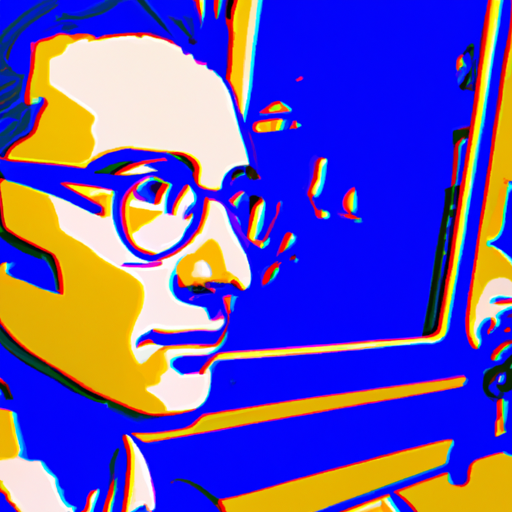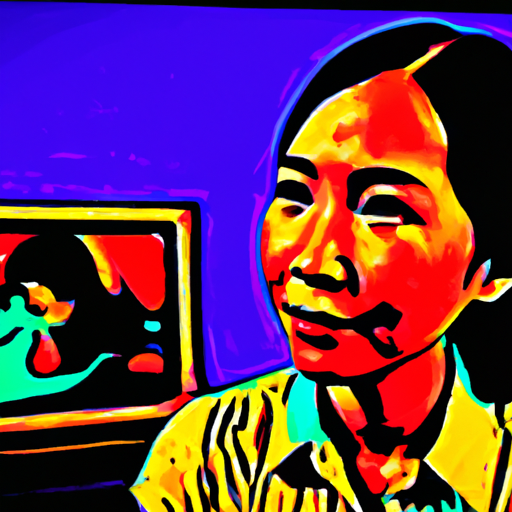
-
Table of Contents
- Exploring AI-Generated Illustrations
- The Rise of AI in Illustration
- The Benefits of AI-Generated Illustrations
- 1. Enhanced Productivity
- 2. Inspiration and Exploration
- 3. Customization and Adaptability
- 4. Cost-Effectiveness
- The Limitations of AI-Generated Illustrations
- 1. Lack of Originality
- 2. Interpretation and Context
- 3. Technical Constraints
- Case Studies: AI in Illustration
- 1. Adobe Sensei
- 2. OpenAI’s DALL-E
- The Future of AI-Generated Illustrations
- 1. Improved Realism and Detail
- 2. Collaboration between AI and Artists
- 3. Ethical Considerations
- Conclusion
Exploring AI-Generated Illustrations

Artificial Intelligence (AI) has revolutionized various industries, and the world of illustration is no exception. With advancements in machine learning and deep learning algorithms, AI-generated illustrations have become increasingly popular. These computer-generated artworks have the potential to transform the creative process, enhance productivity, and open up new possibilities for artists and designers. In this article, we will delve into the world of AI-generated illustrations, exploring their benefits, limitations, and the impact they have on the creative industry.
The Rise of AI in Illustration
AI-generated illustrations are the result of combining machine learning algorithms with vast amounts of data. By analyzing patterns and learning from existing illustrations, AI models can generate new and unique artworks. This technology has gained traction in recent years due to several factors:
- Efficiency: AI-generated illustrations can be created quickly and efficiently, saving artists valuable time and effort.
- Versatility: AI models can generate illustrations in various styles, from realistic to abstract, allowing artists to explore new creative avenues.
- Accessibility: AI tools and platforms make it easier for artists of all skill levels to create professional-looking illustrations, democratizing the field.
As AI technology continues to advance, the quality and realism of AI-generated illustrations are improving, blurring the line between human and machine-created art.
The Benefits of AI-Generated Illustrations
AI-generated illustrations offer numerous benefits to artists, designers, and the creative industry as a whole. Let’s explore some of the key advantages:
1. Enhanced Productivity
Creating illustrations can be a time-consuming process, requiring meticulous attention to detail. AI-generated illustrations can significantly speed up this process, allowing artists to focus on other aspects of their work. By automating repetitive tasks, such as sketching or coloring, artists can produce more illustrations in less time.
2. Inspiration and Exploration
AI models can analyze vast amounts of existing illustrations and generate new ones based on learned patterns. This opens up a world of possibilities for artists, providing them with inspiration and encouraging them to explore different styles and techniques. AI-generated illustrations can serve as a starting point for artists to build upon and develop their unique artistic vision.
3. Customization and Adaptability
AI-generated illustrations can be easily customized to fit specific requirements. Artists can adjust various parameters, such as color schemes, composition, or level of detail, to align with their artistic vision or client’s needs. This flexibility allows for greater adaptability and ensures that the final artwork meets the desired specifications.
4. Cost-Effectiveness
Commissioning original illustrations can be expensive, especially for small businesses or individuals with limited budgets. AI-generated illustrations provide a cost-effective alternative, allowing businesses and individuals to access high-quality artwork at a fraction of the cost. This affordability opens up opportunities for artists to monetize their skills and reach a broader audience.
The Limitations of AI-Generated Illustrations
While AI-generated illustrations offer numerous benefits, it is essential to acknowledge their limitations. Understanding these limitations can help artists and designers make informed decisions about when and how to incorporate AI into their creative process. Here are some key limitations:
1. Lack of Originality
AI models learn from existing illustrations and generate new ones based on learned patterns. While this can be a source of inspiration, it also means that AI-generated illustrations may lack originality and uniqueness. Artists seeking to create truly original artworks may find limitations in relying solely on AI-generated illustrations.
2. Interpretation and Context
AI models lack the ability to understand the context or interpret complex concepts. This limitation can result in AI-generated illustrations that may not accurately convey the intended message or emotion. Artists often rely on their understanding of the subject matter to infuse their illustrations with meaning, something that AI models struggle to replicate.
3. Technical Constraints
AI-generated illustrations are limited by the capabilities of the AI models and algorithms used. While AI technology continues to advance, there are still technical constraints that can impact the quality and realism of the generated illustrations. Artists may find limitations in achieving certain artistic styles or intricate details through AI alone.
Case Studies: AI in Illustration
Several companies and artists have embraced AI-generated illustrations, showcasing the potential of this technology. Let’s explore a few notable case studies:
1. Adobe Sensei
Adobe Sensei, the AI technology developed by Adobe, has been integrated into various creative tools, including Adobe Illustrator. Sensei’s AI algorithms can analyze hand-drawn sketches and convert them into vector illustrations, saving artists time and effort. This technology allows artists to focus on the creative aspects of their work while leveraging AI for the technical execution.
2. OpenAI’s DALL-E
OpenAI’s DALL-E is an AI model trained to generate images from textual descriptions. While primarily focused on generating images of objects, DALL-E has demonstrated the potential for AI-generated illustrations. By providing textual prompts, users can generate unique and imaginative illustrations that align with their descriptions. This technology opens up new possibilities for storytelling and visual communication.
The Future of AI-Generated Illustrations
The field of AI-generated illustrations is still evolving, and the future holds exciting possibilities. Here are some potential developments to look out for:
1. Improved Realism and Detail
As AI models continue to advance, we can expect a significant improvement in the realism and level of detail of AI-generated illustrations. This will allow artists to create highly realistic and intricate artworks with the assistance of AI.
2. Collaboration between AI and Artists
The future of AI-generated illustrations lies in collaboration between AI and artists. Rather than replacing artists, AI can serve as a tool to enhance their creative process. Artists can leverage AI algorithms to generate initial concepts or explore different styles, ultimately infusing their unique artistic vision into the final artwork.
3. Ethical Considerations
As AI-generated illustrations become more prevalent, ethical considerations will come to the forefront. Questions regarding copyright, ownership, and the role of AI in the creative process will need to be addressed. Striking a balance between AI assistance and human creativity will be crucial in ensuring the ethical use of AI in illustration.
Conclusion
AI-generated illustrations have the potential to revolutionize the creative industry, offering enhanced productivity, inspiration, and customization. While they have their limitations, AI-generated illustrations can be a valuable tool for artists and designers. As AI technology continues to advance, we can expect even more realistic and detailed AI-generated illustrations. The future of
